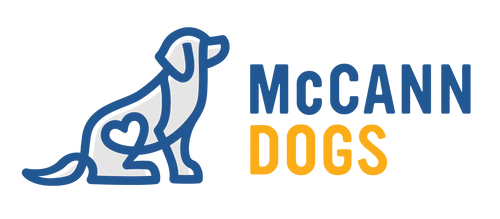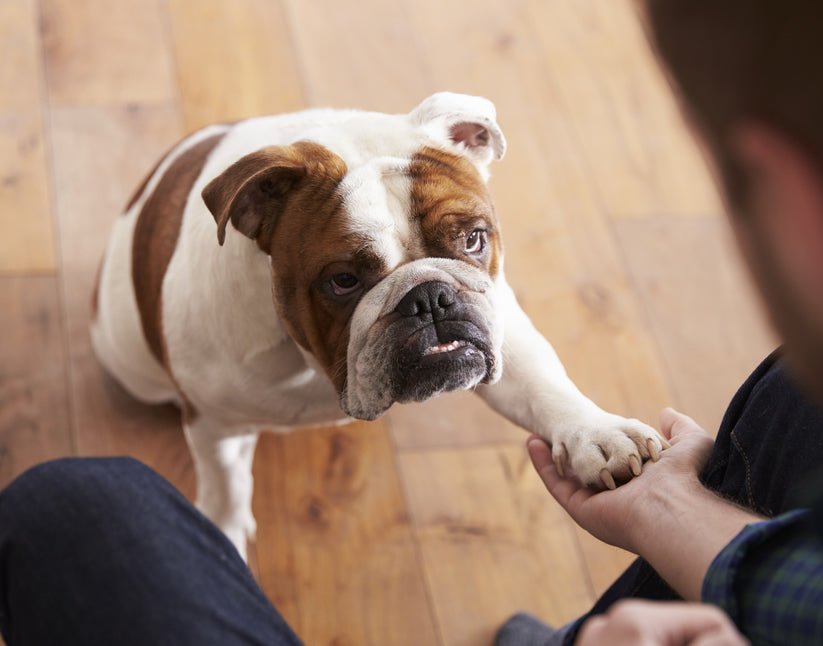![]() Listen to the Podcast
Listen to the Podcast
Leadership is an important thing in so many situations. Good leaders are revered and keep the world moving smoothly. Good leaders make wonderful bosses, raise amazing children and, for our purposes today, raise and train wonderful dogs. So the burning question, of course, is what makes a good leader when it comes to dogs?
There is often confusion surrounding leadership with dogs. The scientific community once believed that dogs lived in and were governed by the rules of a pack structured hierarchy. This theory has been thoroughly debunked, but only after being ingrained in the minds and hearts of dogs trainers all over the world. Since pack theory was largely based on the behaviour and study of captive wolves, it was doomed to failure since firstly, dogs are not wolves. They are very far removed from their wild ancestors these days. Domestication has left a very different imprint. Secondly, it became clear to researchers over time that captive wolves behaved very differently to wolves in the wild. Unfortunately, the pack theory, which made the term "dominance" a household word left an impression on the community and those who only got 1/2 the story, ran with the idea that to be a good leader, you needed to "dominate" your dog. Truly, nothing could be further from the truth.
There's an old saying that goes, "The only thing two dog trainers can agree on is what a third dog trainer is doing wrong." These days, the pendulum is swinging in the opposite direction. In an effort to get away from dominance and pack leader type strategies, people are only getting the other 1/2 of the story and are embracing methods that allow poor behaviour and bad choices to continue and perpetuate. People are working with the misconception that bad behaviour, if ignored, will go away. There are some situations where this is true, however the majority of the time, they will get worse. In addition, allowing a creature of any species to operate with impunity will likely not end well. All beings need direction, whether it comes from a boss or parent, and good direction comes from a good Leader.
What Makes a Good Leader
Good leaders are fair, calm and clear. They set their charges up for success with good management and patient teachings. Here are some of the main points you should hit in order to be a good leader.
Give Good Direction
Good leaders spend time teaching their dogs the skills that they expect them to understand. All too often, people assume that their dogs come home knowing things like sit, down and most importantly, come. When this assumption fails, which it will, they get upset with the dog.
It's poor leadership to ignore the time and effort that is needed to teach a dog good skills. Expecting your dog to listen when you haven't spent enough time teaching will only make them uncertain of you and the rules. Good leaders give their dogs clear training and direction so that they'll truly understand what is expected of them. This is what creates a dog who offers good behaviour and happy responses to the cues they've learned.
Practise Good Management
Good leaders set their dogs up for success rather than leaving them to figure things out on their own. Management is all about setting up the situation to benefit everyone involved. A big component of management is freedom. It's important to not allow your dog more freedom than they are ready for. If you leave your young dog outdoors unattended, don't be surprised when they get into mischief with behaviours you don't like such as digging or barking. A good leader is present during the learning phase so that they can redirect the behaviours they don't want rehearsed. If you allow your dog off leash before they understand how to listen reliably, don't be surprised if they learn to ignore or even evade you when you call them, especially in the face of distractions. Using management tools like leashes, crates and supervision will help your dog learn how you'd like them to behave and they won't have the chance to make up their own rules as they go along.
Remain Calm and Patient
When things don't go as planned, good leaders don't yell, show anger or get frustrated! They are calm, in control and most of all, patient. In order to stay calm and patient, it's helpful to go back to the first 2 points - manage and teach. If you set your dog up for success, the only excitement will be the fun celebrations you share as your young dog learns to listen and respond to your cues.
Learn How to Say No!
A good leader can enforce rules and boundaries without being a tyrant. You don't have to be loud or aggressive to make a point to your dog, but it is crucial that you enforce the rules you've put in place. If you follow the guidelines above, this should cover the majority of your bases, however there will be times when you need to insist with your dog. Whether it's puppy nipping, ignoring a cue or getting into mischief, you can and should say 'no' when the situation warrants. Do so calmly and without emotion and you'll enhance your relationship rather than damage it.
Dogs do what's rewarding for them. If the garbage smells really good, they'll likely want to explore it. If they're nipping, it's because dogs use their mouths as part of their natural interaction. They are just doing what comes naturally to them. It's not personal and doesn't make them bad dogs. They just need to be told 'no' sometimes in order to address undesirable behaviours. In a lot of circumstances, you can teach a competing behaviour to help as well, but clear guidelines will help your dog learn and will help grow your relationship in a positive fashion. So don't be afraid to say no and don't be afraid to say you must! If I asked my dog to sit and they didn't, I would calmly make it happen by placing them into the sit position. Having rules means giving clear direction and sometimes a sprinkle of 'you must.' I want my dog to be clear on what he needs to do to be right. Follow through is important reinforcement for a dog. It's crucial for them to learn that they have to listen to the cues you've given. If you dismiss the little things, like your dog ignoring a sit cue, the big things, like ignoring a recall cue, will be just around the corner. We wouldn't allow our children to blatantly ignore instruction and the same should be true of our dogs.
A good leader will say 'no' when the need arises and then plan a way to turn this situation into a 'yes!' When something doesn't go as planned, plan again! In the above example where I've placed my dog in the sit position, I would immediately start thinking about why. Why did he ignore the cue to sit? Maybe there is something I can change in the environment to help the dog succeed. For example, if my dog didn't sit because he's distracted by a smell, I'll keep working the sit in a less challenging environment and build my dog's understanding. My next job will be to return to the area my dog had trouble and try again. If he still misses the cue, it'll be back to the drawing board for more planning. I don't want to leave my dog to flounder and make repetitive mistakes, but I also don't want to allow him to think it's okay to ignore me. It's crucial to always follow through to aid your dog's understanding.
A Note About Dominance
Dominance has no place in today's modern dog training. Using pack theory, alpha rolls and other dominance based teachings will almost certainly get you into trouble and damage the relationship you're building with your dog. Good leaders are not frightening and they do not force confrontation. There will be times when a fair correction is the best course of action to take while training, but being a tyrant will not help you and your dog move forward together.
Be calm.
Be fair.
Be consistent.
That's good leadership!
As always, Happy Training!
|
|
Hi! I'm Shannon and I joined the McCann team in 1999 while training Quincey, my wonderful and spirited Rottweiler, to have good listening skills. I'm the Director of Online Training and Content for McCann Professional Dog Trainers and I enjoy writing about dogs and dog training for the McCann blog. I currently share my life with 2 Tollers (Reggie & Ned) and I love helping people develop the best possible relationship with their 4-legged family members. |


